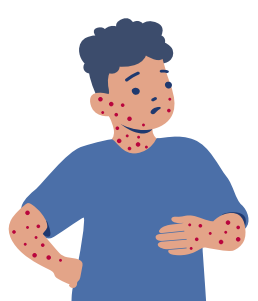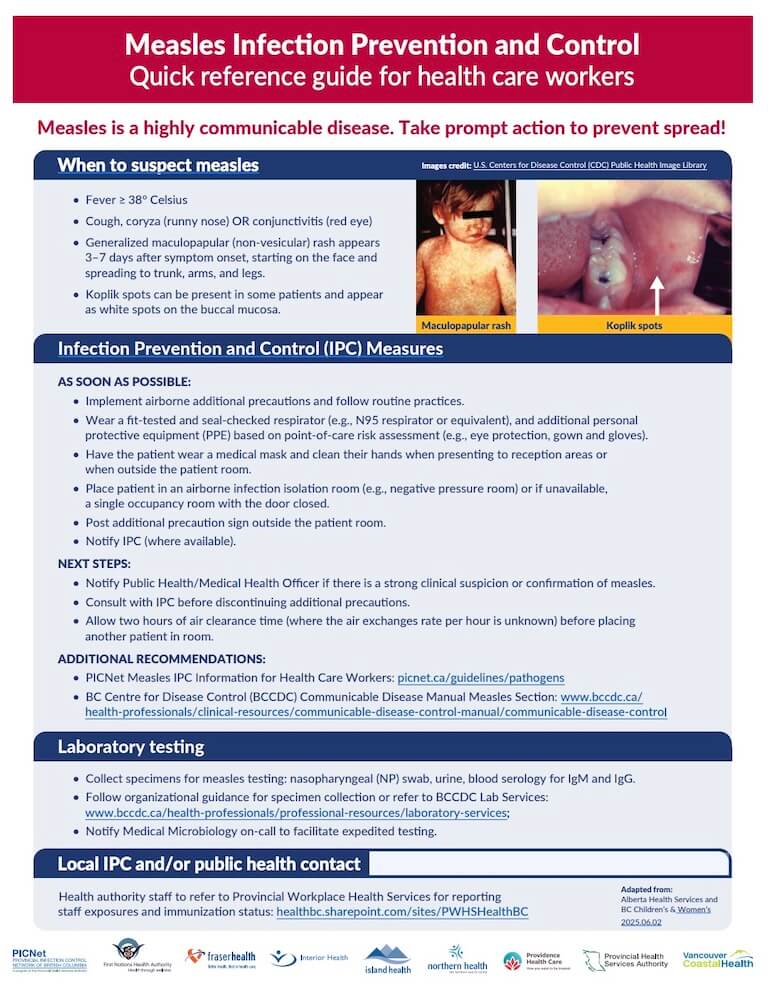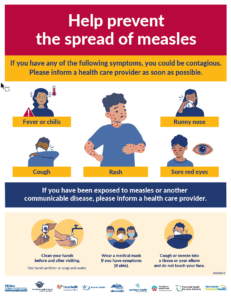Resources for Measles
Measles is a highly contagious viral disease that can lead to serious health complications, particularly among young children, unvaccinated individuals, and those with weakened immune systems. Despite being vaccine-preventable, measles continues to pose a public health risk, especially in the context of declining immunization rates and increased global travel. In British Columbia, periodic cases and outbreaks serve as a reminder of the importance of vigilance in disease surveillance, rapid response, and immunization efforts.

Check out the Measles Information Page on the BC Centre for Disease Control (BCCDC) website for more key information about measles. We would like to highlight resources under the Information for Health Professionals on the right hand side bar on the BCCDC webpage.
|
PICNet-Specific Resources
Below is a collection of PICNet resources to support health care workers and infection control teams in identifying, managing, and preventing measles cases.
Guidelines
- UPDATED: Measles: Infection Prevention and Control Information for Health Care Workers (September 2025)


